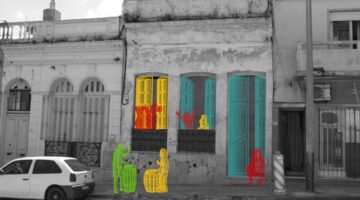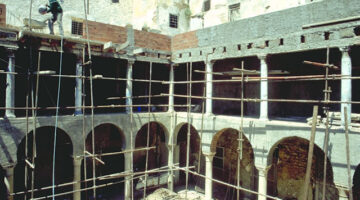Móstoles fight against homelessness
Main objectives of the project
The city of Móstoles in Spain, with a population of 205,614, stands as a compelling example of the proactive measures taken by local authorities worldwide to address housing challenges. Situated in the southern metropolitan area of Madrid, Móstoles, like many neighboring municipalities, endured severe repercussions from the enduring economic downturn that began in 2008. With a predominantly working-class population, the city faced a pressing housing crisis marked by escalating evictions and a rise in homelessness. In response, Móstoles initiated a multifaceted strategy aimed at ameliorating the situation and safeguarding the right to housing. This comprehensive approach encompasses a spectrum of initiatives, ranging from providing direct assistance to families facing eviction to actively promoting social housing and advocating for the rights of the homeless population.
Date
- 2016: Implementation
Stakeholders
- Móstoles municipality
Location
Description
Móstoles, situated in the southern periphery of Madrid, predominantly comprises a working-class demographic, with an average per capita income of 19,000 euros, notably lower than Madrid's average of 30,000 euros. The lingering effects of the economic downturn have exacerbated social and economic disparities, reflected in the surge of users accessing municipal social services from 8,000 before the crisis to 25,000 in 2017. This crisis has particularly impacted the most vulnerable segments of our population, with homelessness emerging as a stark manifestation of social exclusion.
To address this pressing issue, Móstoles has fortified its existing services, including shelters, and in 2016, established a community center providing nighttime shelter—a rarity in the southern metropolitan area of Madrid. Additionally, the city has implemented a successful Housing First strategy and expanded its "emergency apartments" stock by nearly 100 units.
Two key innovations have been introduced to tackle homelessness head-on. Firstly, the creation of the "Office for the Right to Housing" aims to prevent evictions and homelessness. This office serves two primary functions: facilitating connections between housing issues and municipal social services, including the provision of emergency financial aid, and offering legal services to negotiate with various stakeholders to halt evictions and seek resolutions for those affected by financial speculation. The objective here is to stop evictions in our city or reaching agreements that will free people who have been victims of financial speculation, such as moratorium agreements, payment dams or debt forgiveness.
The second innovation is the adoption of the Homeless Bill of Rights, positioning Móstoles as one of the few cities pioneering such initiatives. A multidisciplinary team monitors the daily experiences of homeless individuals, ensuring their rights are upheld. Administrative flexibility has been introduced to enable homeless individuals to access essential services by facilitating their registration. In Spain, you need to be registered in a house to have access to many social services. For this reason, they have facilitated homeless people access to this registry regardless of their housing situation. Collaborative efforts with social agents aim to raise awareness and engage citizens in addressing homelessness.
Through these measures, Móstoles underscores the importance of prioritizing housing issues. Despite budgetary constraints, the city has demonstrated how strategic policy implementation can prevent a housing emergency from escalating into a social crisis.
It is important to mention that the policies have allowed us to have more data on the situation of homelessness in Móstoles. This allows us to improve future care, innovating in future actions.








